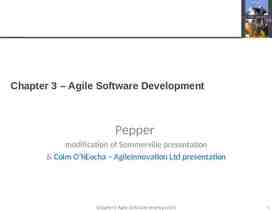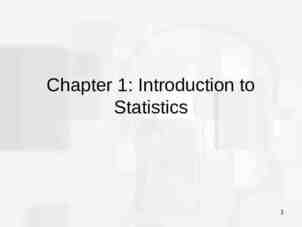Maths Counts Insights into Lesson Study 1
39 Slides3.83 MB

Maths Counts Insights into Lesson Study 1

St Columba’s Comprehensive, Glenties Team: Kathleen Molloy & Breege Melley Topic: Introducing Integration Class: Sixth year Higher Level 2

Insights into Lesson Study Introduction: Focus of Lesson Student Learning : What we learned about students’ understanding based on data collected Teaching Strategies: What we noticed about our own teaching Strengths & Weaknesses of adopting the Lesson Study process 3

Introduction Why did we choose to focus on this mathematical area? We wanted to rethink how we taught integration with an emphasis on conceptual understanding of integration as a process of finding the total (accumulated) change given the rate of change We wanted students to understand integration as this “summing” process, achieved using area and not just as a set of procedures. We wanted students from the beginning of the topic to see the use of integration in context. We chose finding displacement from velocity as the initial context. 4

Introduction Topic investigated: Introducing integration How we planned the lesson Resources used : Prior knowledge Questioning Multi-representations: Story, table, graph, formula Board work Worksheet Formulae and Tables booklet and GeoGebra 6

Introduction Prior knowledge: Speed , displacement, velocity Algebra and Geometry Indices Functions and function notation Vertical shifting of functions from Junior Certificate Trapezoidal rule for estimating area Differential calculus 7

Introduction Learning outcomes: How to find the antiderivative of polynomial functions using the reverse process to differentiation. i.e. The antiderivative of Displacement anti-derivative of velocity Displacement area under the graph of a velocity-time function Hence anti-derivative of velocity can be used to find area under a velocitytime graph and hence to find displacement That the process of finding area under a curve over an interval is known as integration 8

Lesson flow Q. What information can be got from this graph? A. The displacement after any time t. Q: What is the displacement after CV 3 seconds? A: 9 metres Q. How do I find the velocity function )? (rate of change of displacement ) A: Differentiate 𝒗 ( 𝒕 ) 𝟐 𝒕 Draw up a table of values for ) for and plot a graph. 9

Lesson flow Q: What information does this graph give us? Q. What information can be got from this graph? A. The displacement after any time t. Differentiating DifferentiatingQ. How do I find the velocity function )? (rate of change of displacement) A. Find the derivative of the displacement function. A: The velocity after any time 10

Suppose we want to find the area between the velocitytime graph and the -axis, over an interval. How do you find the area under the graph of from 0 - 1 s or 0 - 2 s or from 0 3 s? Use the area of a triangle formula or the trapezoidal rule How do you find the area from 1-2s and 2-3 s? Use the area of a trapezium or subtract the area of two triangles. 11

Suppose we want to find the area between the velocitytime graph and the x-axis, over an interval. How would you find the area under the graph of if the graph was a curve? Split the area into trapezia and use the trapezium rule to find the sum of the areas of the trapezia. This would give an approximate value of the area. 12

Lesson flow: What pattern do you notice? Function for evaluating area AREA The area under the velocity-time graph over an interval of time on the x-axis is the displacement over that interval. Can you make sense of this? Area average velocity by change in time change in displacement. 13

Lesson flow: What is integration? Using area under a graph to find displacement The process of finding area between the graph of a function and the (or ) – axis is called Integration . The limiting value of the sum of the area of rectangles (simpler than trapezia), as the width of each rectangle becomes infinitely small, i.e. as (in this case) 0, is the area under the curve over an interval [ab] This is written as and is known as the definite integral 14

Lesson flow: Recovering the rate of change function How would we recover the displacement function if we only knew the velocity time function? – Not sure How do you get velocity at an instant from displacement? – We get the derivative of the displacement function. Can we recover the displacement function from the velocity function? – Reverse the differentiation process 15

Lesson flow: Reverse the differentiation process Function ? Differentiate Derivative What could we call the reverse process? 16

What is the opposite to “social “behaviour? Anti-social behaviour 17

Lesson flow: Reverse the differentiation process Function Antidifferentiate Differentiate Derivative 18

Lesson flow Differentiating Differentiating Antidifferentiating -enables us to find area under a curve over an interval The antiderivative gives us an area function 19

Lesson flow: What is an anti-derivative of Q. What information can be got from this graph? A. The displacement after any time t. An antiderivative of is Q: How do we know that is an antiderivative of ? A: If we differentiate we get the function 20

Lesson flow: Is the only antiderivative of ? The starting value is varying but the rate of change is the same. What is the antiderivative of ? 𝒔 ( 𝒕 ) 𝒕 𝟐 𝑪 , 𝑪 𝑹 Describe the antiderivative of An infinite set of functions all of which have the same derivative, a.k.a. the indefinite integral 21

Anti-differentiate and check your answer Displacement is a “named” antiderivative i.e. the antiderivative of velocity. In the case of a function the antiderivative is usually denoted by Function Antiderivative Check: Oral work Tables and Formulae booklet 22

Student Learning Data Collected from the Lesson: 1. Academic e.g. samples of students’ work 2. Motivation 3. Social Behaviour 23

Worksheet 24

Student work Correct units: area interpreted in context 25

2 methods of finding area under v(t) curve CV Area under graph displacement 26

Arrived at by seeing a pattern: 27

Student worksheet (and board) at the end of the class 28

Real life . Speedometers tell us our speed (rate of change of distance) at every instant. We are also interested in how far we have travelled (total change in distance). 29

Common Misconceptions Sometimes students forgot to include the constant when writing the antiderivative of a function Some students, when asked to find the antiderivative of the function , rewrote it as and tried to apply the power rule! Since area was used to calculate displacement, some students gave as the unit for displacement instead of metres. 30

Units missing 31

Student Learning Issue with units 32

Recommendations The adjustments you have made or would make in the future: Students using GeoGebra to show that the antiderivative of a function is a set of functions. (GeoGebra file will be available on the website) 33

Teaching Strategies How did I engage and sustain students’ interest and attention during the lesson? The lesson followed a “question and answer” format after the initial introduction Students had activities to do on a regular basis: – Drawing graphs – Finding area under graphs – Pattern recognition – Making conclusions – Learning new skills and generalising those skills The teaching strategies improved students’ confidence in their ability to construct new knowledge and this sustained their interest The full sequence of the lesson being left on the board at the end of the lesson helped students see the big picture 34

Teaching Strategies Was it difficult to facilitate and sustain communication and collaboration during the lesson? No – students at this level were very motivated to learn and comfortable with asking questions and discussing with their fellow students. 35

Teaching Strategies How did I put closure to the lesson? I referred to the board work which summarised the lesson. For homework: Practice of the skill of finding the antiderivative (indefinite integral) from the textbook and verifying answers. 36

Reflections on Lesson Study Process Strengths & Weaknesses As a mathematics team how has Lesson Study impacted on the way we work with other colleagues? We are planning with common student misconceptions in mind. We are focussing more on “how to” teach a topic and not just “what to teach” We are planning with a view to achieving the objectives of the syllabus in tandem: –carry out procedures with understanding, –problem solve, –explain and justify reasoning, –feel confident in being able to do maths and seeing its relevance We are very aware of making connections to prior and future knowledge, across and within strands, to the real world and if possible to other curricular areas. 37

Reflections on Lesson Study Process Strengths & Weaknesses Personally, how has Lesson Study supported my growth as a teacher? I have seen the benefits of planning questions as well as worksheets for the introduction of a concept. I have benefited from increased collaboration with colleagues and from having another teacher observe the learning in my classroom. 38

Reflections on Lesson Study Process Strengths & Weaknesses Recommendations as to how Lesson Study could be integrated into a school context. Time to be allocated for planning Time to be allocated for an observer to observe a class and for reflection after the class 39







